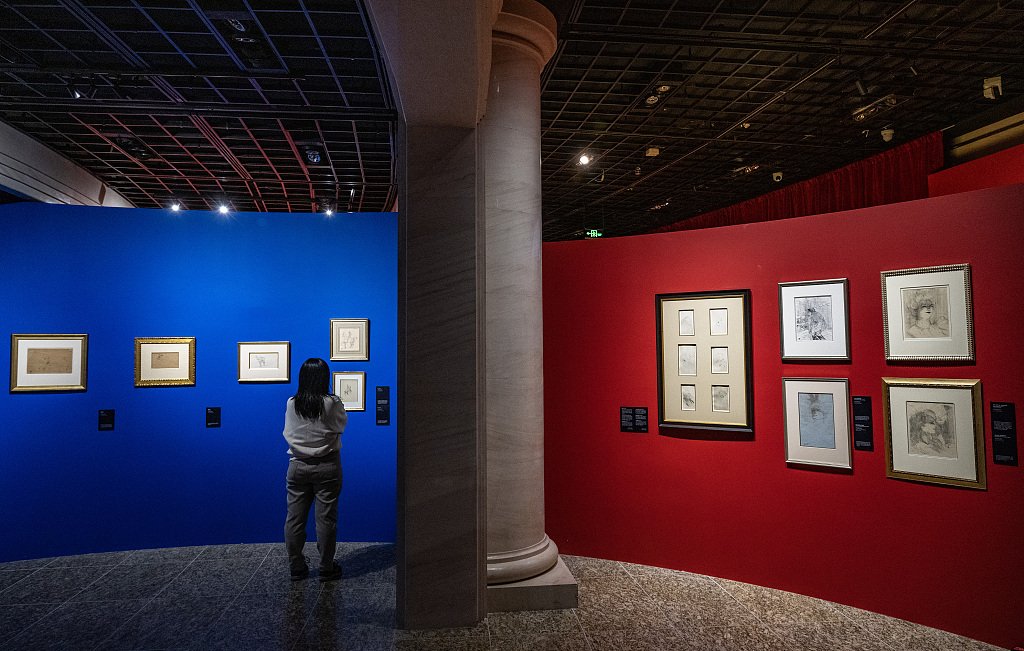The cultures of China and France, two countries with a rich heritage and profound historical significance, have been intertwined for years through their mutual artistic exchanges. These fine arts interactions have not only deepened the understanding between the two nations but also built a solid foundation for future diverse art collaborations.
This cultural synthesis became particularly prominent over the last decade. In 2014, a landmark event marked the 50th anniversary of the establishment of diplomatic relations between China and France. Titled “Ten Masterpieces of French Painting,” the exhibition, held at the National Museum of China in Beijing, gathered ten exemplary works from notable French museums such as the Louvre, Musee d’Orsay, Centre Pompidou, the Palace of Versailles, and the Picasso Museum. The displayed paintings, brimming with historical value and artistic excellence, created a unique cross-cultural dialogue.
The exhibition received high-profile endorsement, with Chinese President Xi Jinping and then-French President Francois Hollande contributing forewords. Xi Jinping acknowledged the profound historical links between China and France, highlighting how their mutual artistic influences have fostered a deep-rooted friendship. He cited the example of several Chinese art masters from the 20th century, including Xu Beihong, Wu Guanzhong, and Wu Zuoren, who studied in France and ingeniously amalgamated techniques of Western realism into traditional Chinese painting, expanding the scope of traditional Chinese art.
In a speech at UNESCO headquarters in Paris in 2014, Xi Jinping praised Chinese freehand oil painting as an innovative fusion of traditional Chinese painting and Western oil painting. The works of Chinese masters like Xu Beihong, he noted, have received widespread acclaim.
Over the years, the National Art Museum of China (NAMOC), referred to as the “bridge of cultural exchange between China and the world,” has played a significant role in facilitating Sino-French art exchanges. In May 2023, two days before the 60th anniversary of NAMOC’s founding, President Xi Jinping expressed his hopes for the NAMOC to become an art venue of national and worldwide prestige. His vision was for the NAMOC to enable the general public to appreciate fine artworks and enhance their artistic literacy, thus contributing to the prosperity and development of Chinese fine arts.
To celebrate its 60th anniversary, the NAMOC launched the “Beauty in the New Era” exhibition series in May. It included the “Prosperity in Diversity” international art exhibition, which featured numerous artworks from France and successfully drew the attention of the Chinese public.
Apart from bringing French art to China, the NAMOC has been instrumental in introducing Chinese art to France. In 2016, an exhibition commemorating the 55th anniversary of China-France diplomatic relations displayed an exquisite collection of paintings and sculptures from prominent Chinese artists at the China Cultural Center in Paris.
Chinese artists, both established and emerging, have gained recognition in France. At the 158th Paris Salon in 2019, young artist Chen Zhao’s work “Blue Dream” stood out and won an award. This success story and many others exemplify how platforms like the annual Croisements Festival have served as effective stages for the artistic interchange between China and France.
Earlier this year, French President Emmanuel Macron attended the 17th Croisements Festival in Beijing. He expressed his hope for the continuance of this rich tradition of Sino-French cultural exchanges and the creation of new avenues for cultural dialogue.
In conclusion, the continual fine arts exchanges between China and France have served to bind the two nations in a deep cultural understanding, enriching both societies and paving the way for an ever-evolving artistic dialogue in the future.
READ MORE:
